#24. A Bizarre View From The Clouds
Flying makes everything you see seem incredibly small. All the cramped and overcrowded cities and their buildings just look like teeny-tiny toys. You can also appreciate every detail in the landscape that wouldn’t be seen otherwise, such as the length of rivers, the width of lakes and the vastness of nature’s beauty. You can even see strange things that, if it weren’t for the plane flying at thousands of feet above the ground, you would most definitely miss.
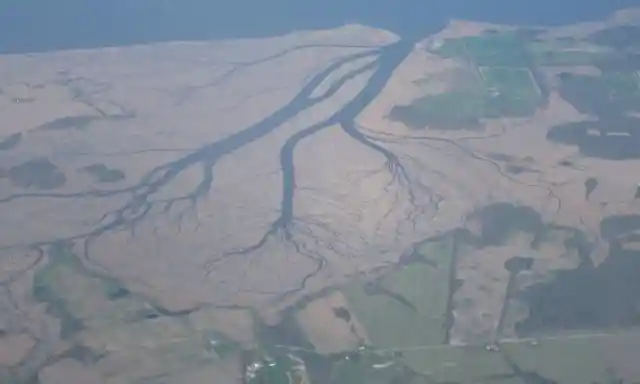
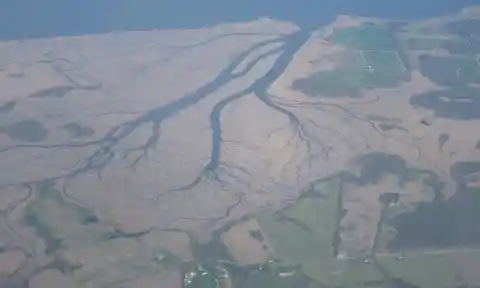
From time to time, if you look closely enough, you get to see unusual and unexpected things apart from the amazing scenery. Every now and then, someone gets a stroke of luck and also a glimpse of quite surprising objects or items hidden in the depths of nature. The Royal Australian Air Force is very much aware of this, since a few members of its crew got the opportunity to experience it firsthand.
#23. A Flight Out Of The Ordinary
Every flight was like two peas in a pod for the Royal Australian Air Force: almost exactly the same. This all changed in 1972 when the entire world heard the news about the Royal Australian Air Force and their astonishing discovery. So, as you can imagine, it was a big, exciting year for all the airmen involved.

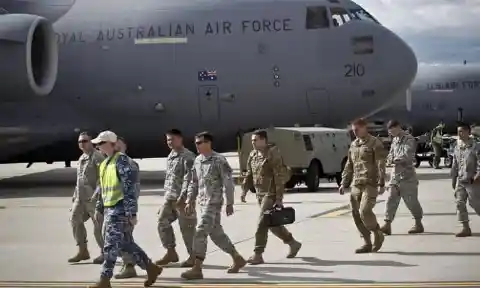
One day, during a regular flight, the crew noticed something unusual. They never expected to casually come across one of the most interesting findings in Australian military history, let alone for the story to captivate so many people from around the world. This unforeseen —yet fortunate— encounter was the first step toward the now legendary “Swamp Ghost” —as the local press nicknamed it— and the revealing of its secrets.
#22. An Unexpected Sighting
The RAAF had to do a routine flight across a remote part of Papua New Guinea, which is located between the southeast of Asia and the west of Oceania. At that time, Papua New Guinea was a part of the Australian Commonwealth, meaning it used to be an Australian colony. It only became a sovereign state in 1975, three years after the Swamp Ghost was found.


It seemed as if everything was going according to plan, since the day had started pretty much like any other day in the lives of the RAAF crew members. However, even though it looked like a regular day for the crew, everything was about to change.
#21. A Strange Object In The Swamp
As the pilots were flying above a swamp in this remote region of Papua New Guinea, they noticed something odd among the greenery but they couldn’t figure out what it was. It looked like something white and weirdly shaped, so the pilots decided to take a better look and try to find out what this mysterious object was and what it was doing among the thick, green bushes of the land.
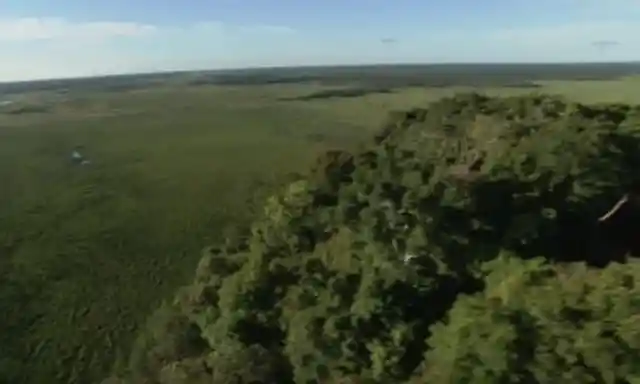

The crew flew in closer, to have a better look at the white and peculiar object. Once they got closer, the crew realized that the object was halfway submerged in water. At that moment, the RAAF crew became aware of the fact that the area upon which they were flying was somewhat of a swampland.
#20. The Papua New Guinea Dangerous Swamps
Papua New Guinea is a beautiful country, and its flora is very rich and diverse. Most of the country is covered in tropical and savannah rainforest, although it also includes alpine habitats and swamps, which are mostly located in the coastal region of the country. Such is the example of the Agaiambo swamp, near the northern coast, where the long lost Pearl Harbor plane was found.

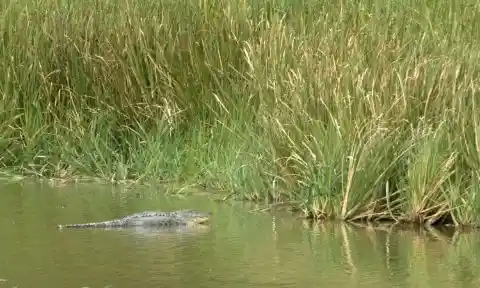
As regards the fauna, Papua New Guinea also thrives with an abundance of wildlife. Some —if not most— of this wildlife can be extremely dangerous to human beings, however. Alligators are common visitors of Agaiambo swamp, and malaria-carrying mosquitoes can be found lurking in the vegetation, among other threatening animals and insects. Despite the danger surrounding the swamp, two men decided to take the risk and find out what was hiding beneath the water.
#19. Time To Explore
A former co-pilot of the Swamp Ghost during World War II, David Tallichet, and a businessman named Fred Hagen assembled a team to trek through the remote land of Papua New Guinea in hopes of finding the lost aircraft. These two men knew the value of the object and the historical importance it carried. This is because they knew something the vast majority of people didn’t.


It may seem shocking, but the area of Papua New Guinea was actually a hotspot during World War II and many battles were fought there. This area, plus other countries such as the Philippines, Borneo, and Australia was known as the “Southwest Pacific theatre”. In warfare, a “theatre” is an area where important military events take place. Both David Tallichet and Fred Hagen knew this, and they were eager to find the historical treasures that were hidden in nature.
#18. Into The Wild
Both Tallichet and Hagen were avid collectors of classic military planes and war paraphernalia. Both men also had experience in restoring old war relics, meaning they had the passion and knowledge to lead this expedition. In order to do so, they brought together a team that included some locals, and they slipped into their gear and headed toward the menacing and secluded land of Papua New Guinea with great expectation.
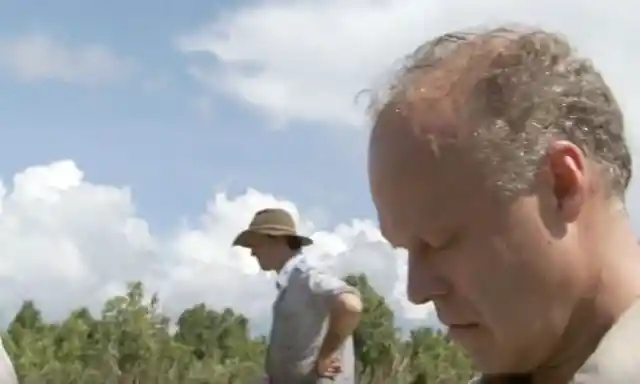

Because of all the wild animals creeping in the greenery, the muddy swamp waters, and the incredibly high temperatures the team had to endure, this mission was far from easy. But none of this mattered to Tallichet and Hagen, as they trusted in their crew’s survival skills and expertise. Even though these men had only a vague idea regarding the whereabouts of the former war aircraft, their hopes were high and nothing could stop them, so they continued their journey despite the hardships.
#17. The Great Finding
Once the members of the expedition reached their yearned destination, they discovered the mysterious aircraft covered in plants. Nevertheless, no one could believe it was still in such good shape. The fact that the aircraft had been partially submerged in water throughout so many years and had been lying in such a hard-to-reach location contributed to its amazing preservation.


Soon enough, the entire team —and the whole world— discovered that the baffling object that locals named ‘Swamp Ghost’ was, in fact, an incredibly large plane. But there were still questions to be answered, and more mysteries to be revealed. How long had it been there? Where did it come from? How did it end up in the Agaiambo swamp? All these questions, luckily, didn’t stay unanswered for long.
#16. The Truth Behind The Swamp Ghost
As you can imagine, the media was very interested in the story behind the plane and went crazy when they learned about the finding. Media coverage was colossal, and the public became so greatly invested that lots of people traveled to this remote area of Papua New Guinea just to see the massive aircraft in all its glory. However, they still desired to learn about how it had ended up in the swamp.
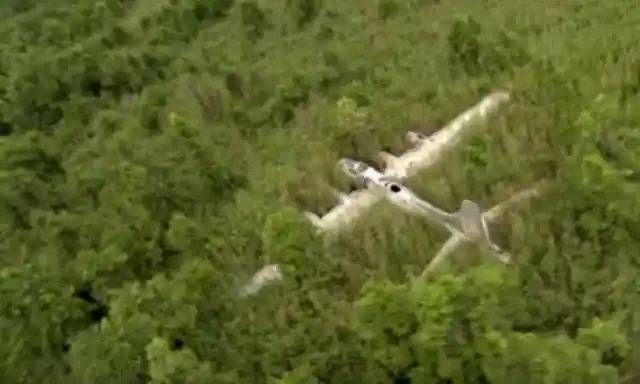

Once the plane was inspected, researchers confirmed it belonged to the 1940s and that it was, in fact, a Bomber plane from World War II. The aircraft was renamed ‘the Holy Grail’ since, without a doubt, a long-lost treasure had finally been found. However, given the plane was so well-preserved, David Tallichet, Fred Hagen and their team had quite a hard time removing it from the Agaiombo swamp.
#15. Moving The Bomber
The Bomber plane was indeed a symbol of past times, as it was a long-lasting witness of the deadly conflict between the United States and the Japanese Empire during WWII. Nonetheless, it had to be moved from the swamp. This turned out to be a very tricky task. Since the plane was literally inside the swamp and partly submerged in water, reaching it was nearly impossible and moving it without causing damaging it was very difficult as well.

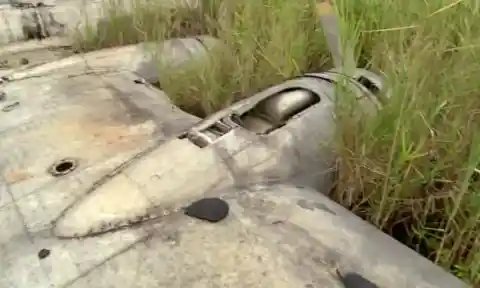
Because of these adversities, the team couldn’t move the plane on their first visit to the wreckage, but David Tallichet and Fred Hagen were stubborn. They had committed to the idea of disassembling the plane and shifting it to a safer place, somewhere where it could finally rest in peace with all its might. So they left the beautiful land of Papua New Guinea only to return some time later, but this time, much more prepared for the task.
#14. The Flying Fortress
A few weeks later, it was revealed that the so-called ‘Swamp Ghost’ was a B-17E ‘Flying Fortress’ four-engine heavy bomber. The B-17E was commonly known as the ‘Flying Fortress’, name given by a journalist from Seattle Times back in 1935. During one of the many test flights, the journalist told everyone that the plane looked like a flying fortress and ever since then, the nickname stuck on.
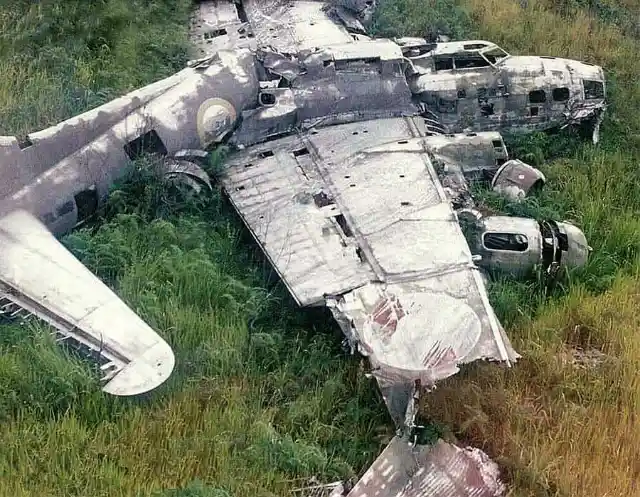

The plane was developed in 1935 for the United States Army Air Corps and was first used in the battlefield in 1941. With a gross weight of 54,000 lbs and a length of 74 ft, it was known for its capacity to repel attacks and still inflict damage to enemies. In other words, it was a fairly large aircraft. Tallichet and Hagen were very much aware of this, and even though they began their attempt to restore the B-17E in the 1980s, it took decades for them to finally restore the plane to its original appearance.
#13. The Japanese Attack
Exactly one day before the infamous Japanese attack on Pearl Harbor took place on December 7, 1941, the B-17E was sent on a special mission. Instead of flying along the 435th Bombardment Squadron, which was also known as the ‘Kangaroo Squadron’, the ‘Flying Fortress’ was unknowingly sent out on one of the first —and most threatening— bombing missions of the Second World War.
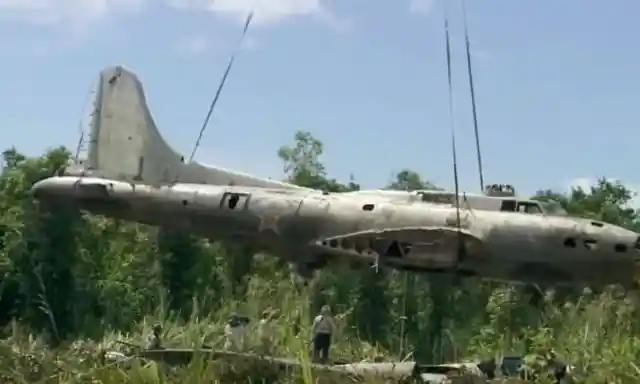
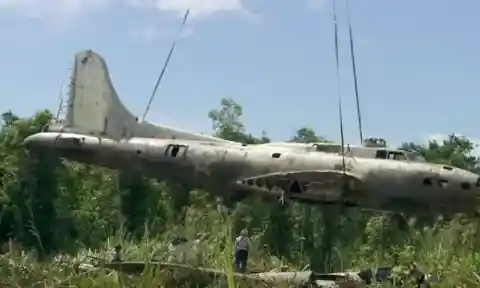
But all of a sudden, something terrible happened. The Japanese military invaded the township of Rabaul, on the island of New Britain in Papua New Guinea. This posed a threat to the allied troops stationed in the country and meant that something needed to be done in order to ensure the safety of each and every soldier, and of course, the residents of Rabaul. However, things took quite a dark turn for the Swamp Ghost’s crew.
#12. The Crash
In February of 1942, the B-17E ‘Flying Fortress’ was sent off to attack Japanese ships in Rabaul Harbor, on New Britain Island. That fateful day, nothing went according to then plan for the ‘Swamp Ghost’, as it would tragically never return from its mission. During the attack, the ‘Flying Fortress’ was hit, but the plane didn’t explode. The crew then tried to make its way back to Port Moresby, Papua New Guinea’s capital city. Unfortunately, the plane never reached its destination.
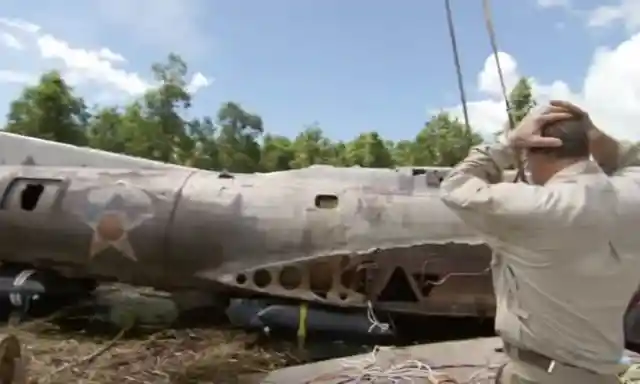
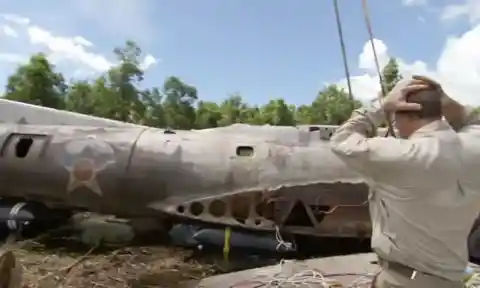
Because of this, the aircraft faced two critical problems: a punctured wing and an enormous fuel leak. There was no other choice for the pilot but to attempt to make a crash landing in the New Guinean wilderness. He believed to have found the perfect spot to perform an emergency landing, but sadly, more disasters awaited him and his crew.
#11. On The Road To Nowhere
As the plane came upon the Own Stanley Mountains, the pilot observed a soft wheat field which he thought would be more than perfect for a crash landing. But, as the old saying goes, ‘all that glitters is not gold’, and what he had spotted was not actually a wheat field. On the contrary, what he thought to be the perfect spot for an emergency landing turned out to be something quite dissimilar.
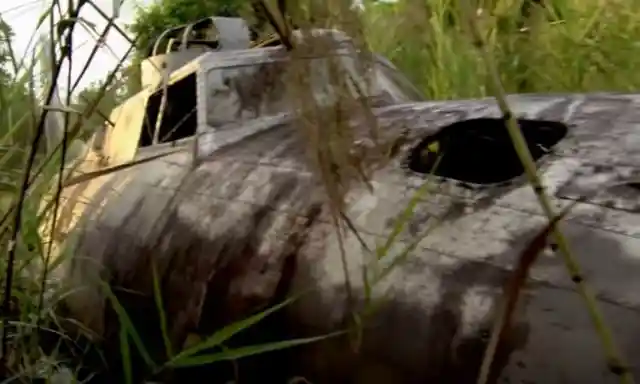

That magnificent and ideal wheat field was, as a matter of fact, nothing but a swamp inhabited by voracious and ruthless crocodiles, among other wild animals. To everyone’s surprise, the B-17E managed to land in the Agaiombo swamp quite calmly. And even more surprisingly, none of the crew members were seriously injured. Despite the fact that they were all alive and well, the airmen were stranded in the middle of a dangerous region.
#10. The Survival
Even though the entire crew had survived, each member tragically caught malaria as they attempted to cross the swamp. Luckily, they came across a native who aided them and carried the airmen back to his village. This generous and compassionate local helped care for the B-17E’s crew and nurse them back to health. Once they all got better and were healthy enough, it was time for the airmen to be reunited with the US Forces.

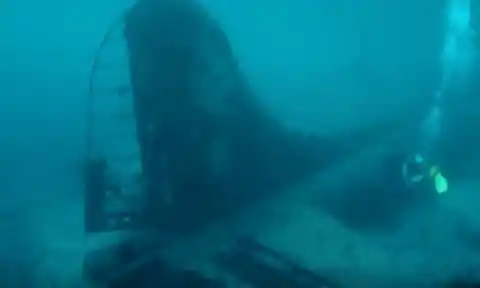
The crew of the ‘Flying Fortress’ was ultimately reunited with the US Forces in the city of Port Moresby, the destination where they were originally meant to land in before the airship got wrecked. All the crew members were welcomed back as heroes, yet, bizarrely enough, were sent out on a new mission almost immediately.
#9. The Forgotten Airship
While the crew of the ‘Swamp Ghost’ was redeployed and sent out on new missions, the B-17E ‘Flying Fortress’ remained in the middle of Agaiombo swamp, half-submerged in its distant and muddy waters. Eventually, the war ended, the soldiers went home, and the airship was completely forgotten.
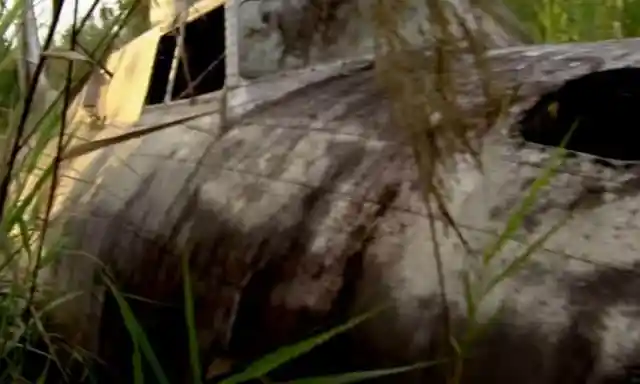

For a few decades, the world forgot about the ‘Swamp Ghost’, everyone except for a few locals who lived in the surrounding areas. The US Forces made no attempts to recover the plane from the wreck site. All of this changed in 1972 when the aircraft was accidentally rediscovered by members of the Royal Australian Air Force just as they were flying above the swamp.
#8. Inside The Swamp Ghost
The moment that Tallichet and Hagen reached the ‘Flying Fortress’, they realized the plane was unimaginably well preserved. However, even though it had been partially submerged in water and laying in a remote location, this didn’t prevent locals from burglarizing the insides of the ‘Swamp Ghost’. This meant that the plane was best preserved from the outside, rather than the inside.

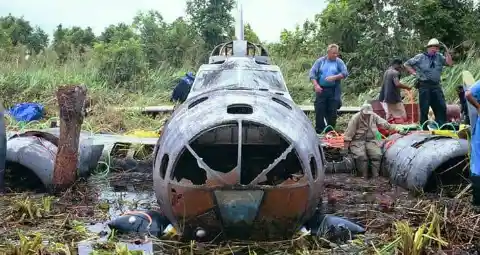
In fact, by the time they arrived, all of the weaponry and mechanics had already been looted. But little did this matter for the two men, as they were determined to rescue and then restore the abandoned plane one way or the other. But can anyone guess why the ‘Flying Fortress’ was so valuable?
#7. Genuine Battle Scars
Once the news of the discovery spread throughout the world, everyone considered the ‘Flying Fortress’ as one of the greatest treasures in warfare history. After all, the ‘Flying Fortress’ had been one of only four planes of its kind, so the fact that one of them had been discovered – and in relatively good shape – was groundbreaking news!

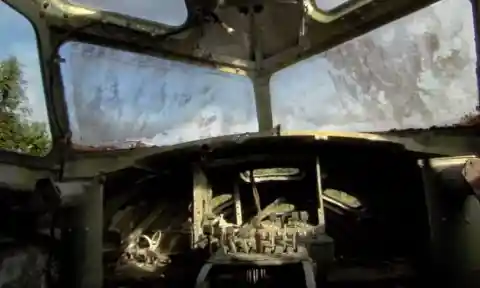
According to the Pacific Aviation Museum in Hawaii, the ‘Flying Fortress’ is “arguably the world’s only intact and unretired World War II-era B-17E bomber, a one-of-a-kind example of an aircraft that played an indispensable role in winning World War II. And it is the only B-17 in the world that still bears its battle scars“. So we’re really talking about a valuable historical artifact! But wait, this is not all!
#6. Favorite Plane
Back in the 1930s, Boeing started fabricating the B-17 heavy bombers. Since its introduction to the public, the B-17 became the third-most massively produced bomber of all time. During the Second World War, it was largely used against German forces in Europe. In addition, the B-17 was also employed as an antisubmarine aircraft, a drone controller, and a search-and-rescue aircraft.

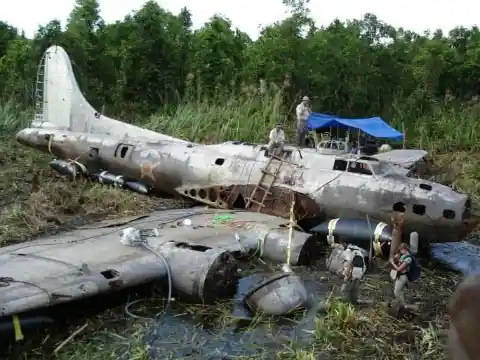
During the war in the Pacific, the B-17 bomber was conducted, to a lesser extent, in storming Japanese shipping and airfields. Most of the aircraft were stationed in Alaska, Panama, and Hawaii. The B-17 bomber was considered a highly strategic resource in World War II, and it’s believed to have been responsible for dropping around 640,000 tons of bombs on Nazi Germany. But did this mean anything to Tallichet and Hagen?
#5. A Vision Of The Future
The introduction of the bomber was part of President Roosevelt’s plan of modernizing the US military forces. In fact, the B-17 represented a new generation of bomber planes that managed to carry a larger amount of payload and serve isolated bases all around the world. It was a rather fast, high-flying, long-range bomber with heavy defensive armament at the expense of bombload. The B-17 also had a reputation for being tough and resistant, which was based upon photographs and stories of acutely damaged planes returning to base safely.

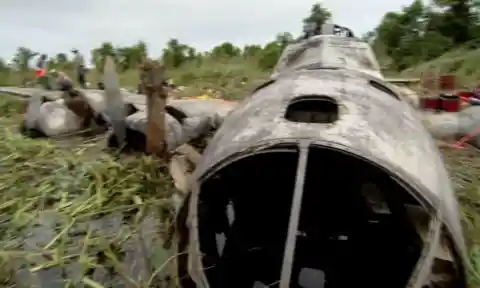
After the war inevitably ended, the B-17 swiftly became irrelevant for the US Force and eventually fell out of favor. The Army Air Forces retired most of its fleet, and while only a few bombers remained in use, they were mostly employed in secondary missions such as transport and photo-reconnaissance. The majority of the B-17s were then returned to the United States, where they were sold for scrap and melted down.
#4. Removing The Bomber From The Swamp
Tallichet and Hagen’s rescue operation finally came to an end in 2006. However, it would take another four long years for the men and their team to receive permission to return the aircraft to American soil. Another obstacle they had to sort out was to convince the locals to transfer the B-17E ‘Flying Fortress’ back to the US.
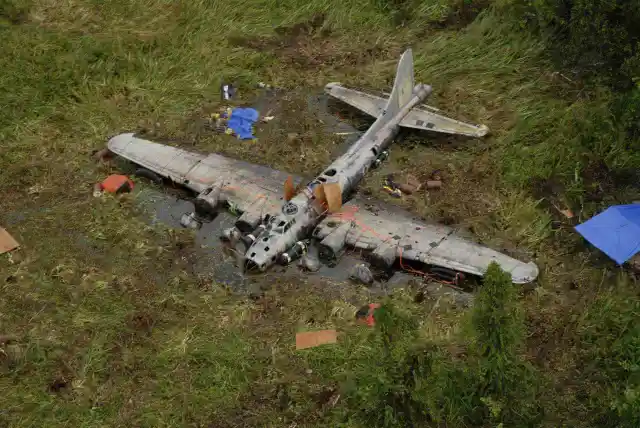

Strangely enough, locals believed the abandoned aircraft to be a relic sitting on divine land, which meant they had to be persuaded in order to agree on handing over the ‘Swamp Ghost’. They even performed a ceremony to pacify the spirits that supposedly inhabited the swamp. After the ceremony, the plane was ready to be removed from the Agaiombo swamp, but Tallichet and Hagen encountered yet another problem.
#3. The Local Chief’s Son
Apparently, over the years, these people had grown attached to the long-abandoned aircraft. They thought of it as a relic, and it was very difficult for them to let the B-17E ‘Flying Fortress’ go. But one man was especially against the removal of the plane and he set out to make sure that the aircraft stayed in its place. This man also happened to be the son of a local chief.


The local chief’s son even went as far as recruiting a crowd of people, who were meant to intercept the plane before it could be moved to a barge offshore. Fortunately for Tallichet and Hagen, the group’s efforts were ineffective and the bomber was picked up by a Russian-made military helicopter and transported to the freight ship that was waiting offshore. The chief’s son had no choice but to silently watch as the B-17 was lifted away.
#2. Pearl Harbor
Just a few months after being removed from the Agaiombo swamp in Papua New Guinea, the B-17 ‘Flying Fortress’ was exhibited in Long Beach California. A very interesting, touching and peculiar detail of this exhibition is that many of the people who attended the event were actually friends and relatives of the original bomber’s crew.


Most of the visitors were thrilled with excitement as they witnessed the remains of the long-lost plane, which would now forever rest in its home country. The B-17E ‘Flying Fortress’ has a great historical significance, as it symbolizes a tragic part of our history which claimed millions of innocent lives. Since 2013, the ‘Swamp Ghost’ has been on display at the Pacific Aviation Museum at Pearl Harbor.
#1 The Complete Restoration.
To this day, many of the locals remain upset because of the removal of the plane. The thing is that the ‘Swamp Ghost’ used to attract a great number of tourists, so the economy of Papua New Guinea was heavily affected by its rescue. Now, the aircraft now rests in a museum in Hawaii, but will this be its permanent home?
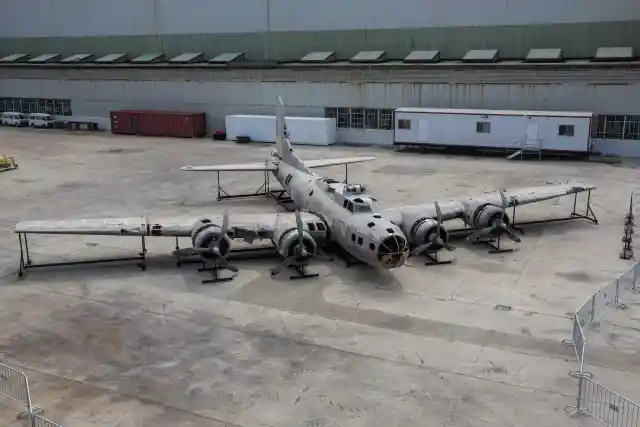
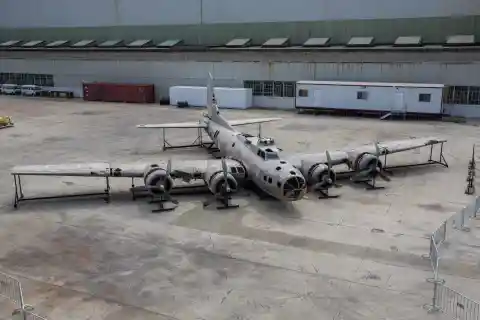
Now, people are faced with the task of restoring the plane to its former glory, but this is harder than it sounds. One of the main obstacles is that the restoration costs are incredibly high and might even exceed $5 million. However, we should not forget that the ‘Swamp Ghost’ is a true relic that carries great historical value, so isn’t it worth it? Once the bomber is fully restored, it’s due to be transported to the Hangar 79 on Ford Island, an islet in the center of Pearl Harbor.